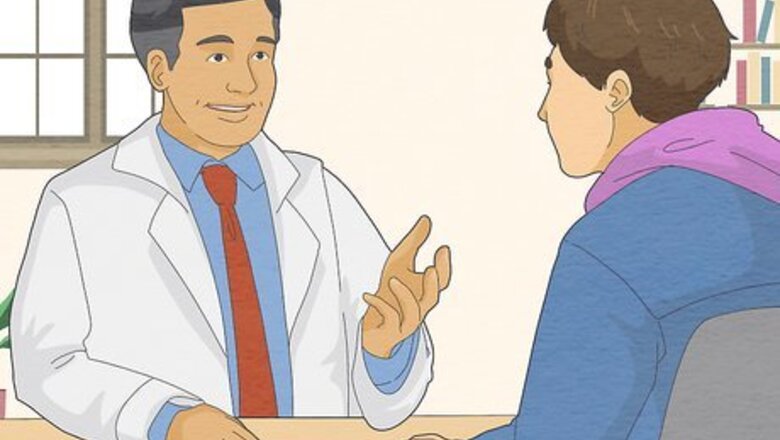
views
X
Trustworthy Source
Mayo Clinic
Educational website from one of the world's leading hospitals
Go to source
We’ll fill you in on how to get a TRT prescription from your doctor, what that treatment looks like, and the benefits, side effects, and risks of TRT. We’ll also offer ways to naturally boost your testosterone levels without medical treatment.
- Testosterone replacement therapy (TRT) requires a prescription and oversight from your doctor, so make an appointment to speak with your doctor about TRT.
- TRT is used to treat unusually low testosterone levels, certain diseases or injury which cause hormone imbalance, or to aid gender transition.
- TRT typically costs about $150-200 per dose, and may cause side effects like low sperm count, skin irritation, urinary complications, or hair loss.
Getting a TRT Prescription
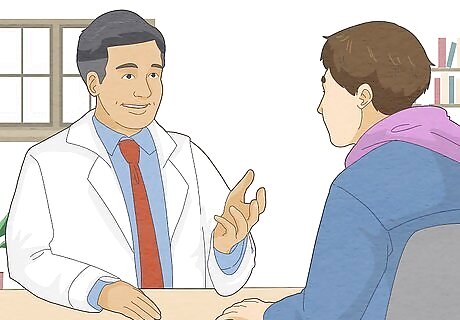
Speak with your physician to receive a prescription for TRT treatment. TRT medications are closely regulated, and are only obtainable via a prescription from your doctor. Schedule an appointment with your general practitioner and express your interest in raising your testosterone levels using medication. Your doctor will discuss and help you explore whether or not TRT is right for you, or if you might benefit from an alternative treatment. TRT is often used to treat: Testosterone levels below 300 nanograms per deciliter Klinefelter syndrome (when a male is born with an extra X chromosome, resulting in reduced testosterone) Damage to the testicles caused by cancer or another injury Patients seeking to transition from female to male Various symptoms related to low testosterone levels, like reduced sex drive or hair loss
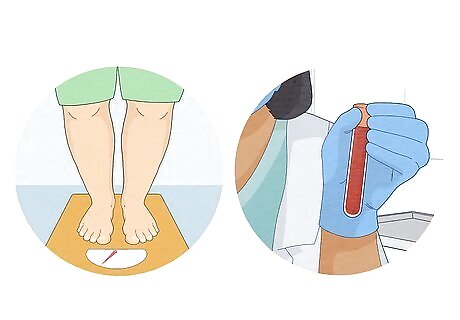
Get physical examinations and blood tests to ensure TRT is right for you. To make sure your body responds well to treatment, your doctor may perform a physical assessment and other tests. They might check your BMI, testicle health, blood pressure and cholesterol, and other physical aspects. In addition, they may take blood tests to test your testosterone levels and other conditions of the blood, like prolactin or hemoglobin levels, which will give your doctor more insight into your condition. Your doctor might also ask you to sit through an MRI to assess your pituitary gland, which regulates testosterone production. Your doctor may also ask you about other specific conditions that may affect your treatment, like headaches, past diseases, anemia, a history of genital surgery, and other testosterone-related issues. Describe your symptoms to the best of your ability to get the most accurate diagnosis.
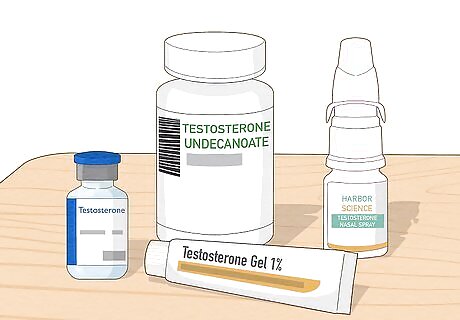
Plan your treatment type and schedule with your doctor. TRT comes in a variety of forms, and while they’re all more or less equally effective, their ease and method of application differ. Your doctor will review treatment options with you to find the form you’re most comfortable with and which is easiest for you. How much does TRT cost? Treatment costs anywhere from $150-200 per dose, depending on your medication, supplier, and insurance coverage. TRT is often an indefinite and ongoing treatment. You may be asked to undergo regular checkups every 6-12 months. Results of TRT vary from person to person, but you may notice changes as soon as a week into treatment.
Forms of TRT
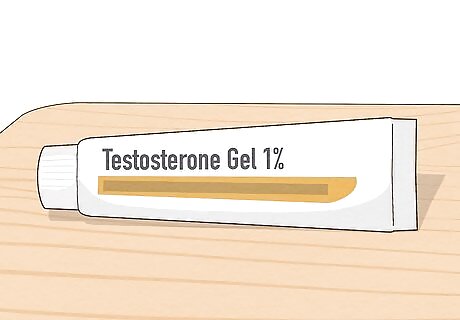
Topical: Also known as “transdermal,” this method takes the form of patches, gels, or creams that are placed on the skin, and are often taken for 4 days at a time. These are most effective when covered with a bandage or another form of dressing.

Injection: One of the most common methods is done by injecting testosterone under the skin using a syringe. Injections have either short-term or long-term effectiveness, and are typically self-administered weekly, biweekly, or monthly, based on your needs.

Oral: Oral doses come in the form of an ingestible patch that you place on your gums, and testosterone is released over the course of 12 hours into your bloodstream. It may be easier on your liver, but might also cause headaches or gum irritation.
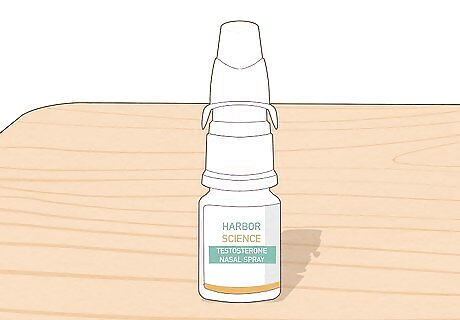
Intranasal: This type is a gel that you pump into your nose via applicator, usually about 3 times a day. Some patients may find this application uncomfortable and opt for another form of TRT instead.
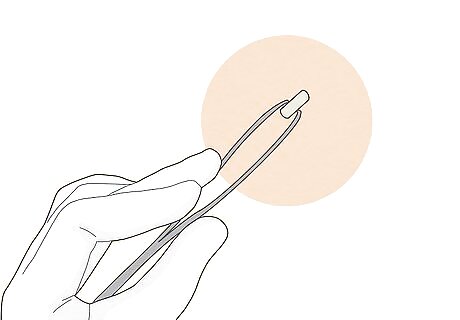
Pellets: Your doctor inserts pelletized testosterone just under the skin of your buttocks or hip, accompanied by numbing anesthesia for your comfort. This form releases testosterone over 3-6 months, making it a good long-term solution. Often, these come in the form of injections.
TRT Benefits, Side Effects, and Risks
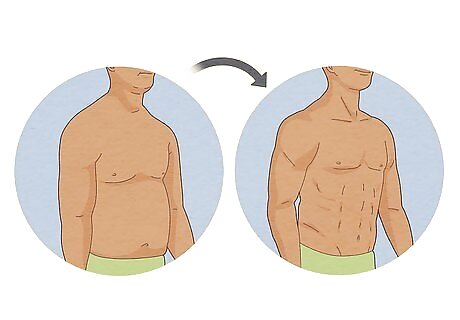
TRT may reverse many conditions related to low testosterone levels. Testosterone replacement therapy may reverse or alleviate many of the symptoms of testosterone deficiency, like hair loss. In addition, it may improve your sex drive, improve your mood or reduce symptoms of depression, or give you more overall energy. In addition, it may help you increase your muscle mass and bone density, if a lack of these is caused by low testosterone.
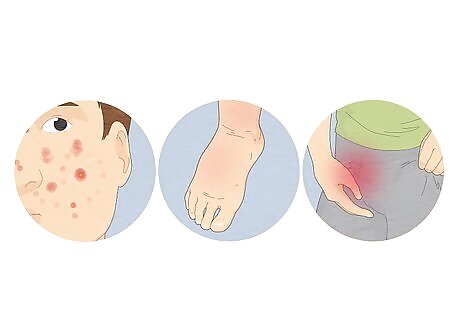
TRT might induce side effects like acne or worsening sleep apnea. TRT is not without its drawbacks. Many report negative side effects while taking treatment, and some choose to abandon TRT if they find that these side effects become too extreme. Other side effects of TRT include: Lower sperm count or infertility Irritation of the skin Hair loss Anxiety or frustration Swollen ankles or fluid retention in the joints Urinary complications caused by a swollen prostate Enlarged or sore breasts Reduced size in testicles Reduced sperm count
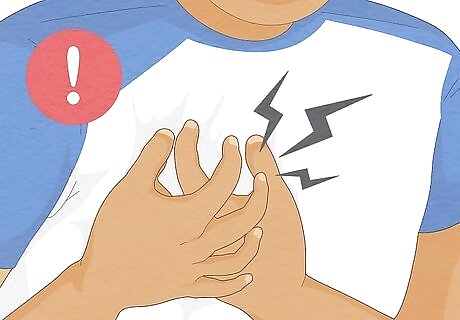
Avoid TRT if you have a history of prostate cancer or certain other diseases. Your doctor may forego TRT if you have a history or known risk of prostate cancer, since increased testosterone levels may worsen that risk. In addition, TRT may place you at increased risk of the following diseases, especially if you have a history of complications: Breast cancer Polycythemia (an abundance of red blood cells) Urinary tract complications Congestive heart failure Liver dysfunction
Symptoms and Causes of Low Testosterone
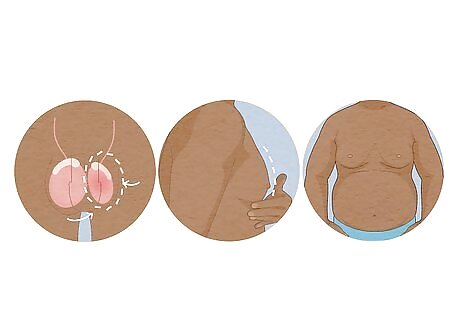
Symptoms of low testosterone include erectile dysfunction and hair loss. Testosterone is responsible for regulating a number of bodily processes, which may be interrupted by low testosterone (also known as “hypogonadism"). Usually, to receive TRT, you must have low levels of testosterone, plus one or more symptoms that accompany hypogonadism. If you suffer from hypogonadism, you may also experience: Reduced sex drive Hot flashes Shrinking testicles Low sperm count or infertility Memory loss or difficulty concentrating Depression Enlarged breasts Higher body fat Loss of strength or muscle mass Lower endurance
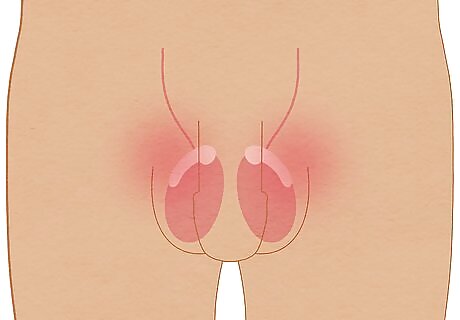
Hypogonadism may be caused by disease or advanced age. Low testosterone is typically categorized into “primary hypogonadism,” which describes physical abnormalities in the testicles that impact testosterone production, and “secondary hypogonadism,” which describes a deficiency of testosterone caused by abnormalities in the hypothalamus or pituitary glands, which are responsible for hormone production and regulation. Before you receive treatment, your doctor will identify the cause of your hypogonadism. More specifically, these conditions may be caused by: Absence of testicles, or undescended testicles Various diseases, like Leydig cell hypoplasia or Noonan syndrome (delayed puberty) Injury to the testicles Liver cirrhosis Alcohol use Obesity Sleep apnea Certain medications like psychoactive drugs or estrogen supplements
Natural Ways to Balance Testosterone
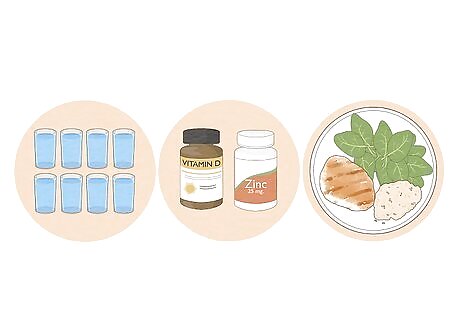
Eat a healthy, balanced diet to maintain proper testosterone levels. One of the best ways to balance your testosterone naturally is by balancing your diet, as well, so that your body is working properly and can focus on regular functions like regulating testosterone. Experts recommend eating 5 portions of fruits and vegetables each day and structuring your meals around starchy foods like potatoes, bread, or pasta. Supplement these with proteins like beans, meat, or eggs, and small amounts of unsaturated oils, like olive oil. Also, drink at least 6-8 glasses of water each day to keep your body hydrated and your endocrine system in tip-top shape. Supplement your diet with vitamin D and zinc, taking them according to your doctor’s instructions or the instructions on the packaging. To help you eat healthier more consistently, plan your meals before each week, assigning recipes to each day and buying groceries ahead of time so that you don’t resort to takeout or less healthy foods.

Sleep at least 5 hours a day to maintain healthy testosterone levels. The amount of testosterone your body produces is regulated in part by your sleep cycle. One study found that some patients who slept less than 5 hours a day saw a 10-15% decrease in testosterone levels. Some experts suggest that adults over the age of 18 need 7-9 hours of sleep each night to remain properly rested. Improve your sleep by taking a relaxing bath before bed, or taking melatonin supplements in the form of capsules or syrup, about 30 minutes before bed, according to the instructions on the packaging. Melatonin is a natural sleep aid that’s available over the counter.
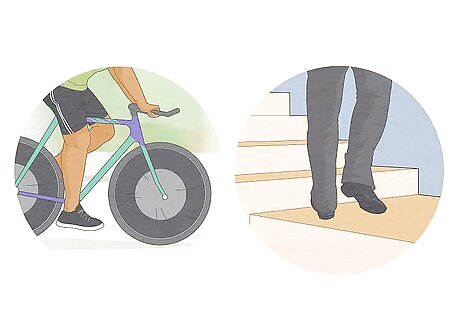
Exercise regularly or reduce your overall weight to boost testosterone. Research shows that your testosterone levels are higher than usual after a moderate- to high-intensity workout. Patients with less body weight also tend to have increased testosterone. Aim for at least 150 minutes of moderate exercise per week, such as running, biking, swimming, or active sports. To reduce your body weight without exercise, aim to increase your baseline activity by doing small, active motions throughout the day, like taking the stairs instead of the elevator, standing at your desk instead of sitting, or taking 15-20 minute walks every couple of hours.
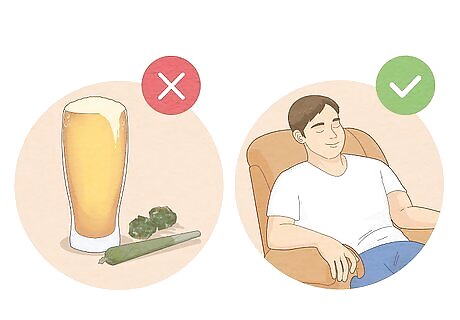
Reduce your stress and avoid using drugs or consuming alcohol. When you’re stressed, your body prioritizes production of certain hormones and lowers others, testosterone being one of them. Destress each day by meditating or performing daily yoga. In addition, research indicates that alcohol use over extended periods may lower testosterone levels. Opt for non-alcholic beverages and avoid psychoactive drugs to maintain balanced hormone levels.


















Comments
0 comment